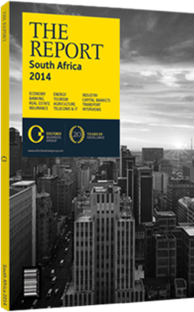OBG talks to Stephen Saad, Group Chief Executive, Aspen

Interview: Stephen Saad
How can funds be better allocated to effectively address the country’s disease burden?
ATEOHEN SAAD: South Africa spends 8.5% of its GDP on health care. Around half of this is spent in the private sector, which services around 20% of the population. The remaining half is used to finance around 80% of the South African population. This lends itself to disproportionate funding between the private and public sectors. Health spending must be considered relative to the disease burden of the country and various other factors. It is well known that South Africa has one of the world’s most challenging disease burdens, presenting a mix of infectious disease patterns common to the developing world on the one hand, and chronic lifestyle diseases present in developed markets, on the other.
Nonetheless, the outcomes South Africa has achieved relative to the health care investment made have been poor to date. Accordingly, the government is planning to implement a national health insurance or universal coverage system, which aims to provide some equalisation of funding across the public and private sectors. No matter which way you look at it, for the South African health care system to succeed, it is critical that the infrastructure for public health care is significantly improved and that standards are elevated to rival those in the private sector. Moreover, the under-resourcing of human capital, pervasive in the public sector, must be addressed. A key focal area should be maximising critical mass by leveraging economies of scale and thereby improving efficiency and productivity across the entire health care system, which in itself would lend to savings for patients and the government.
To what extent has the Preferential Procurement Policy Framework Act affected costs?
SAAD: More often than not, pharmaceuticals produced within South Africa are less expensive than their imported counterparts. We have never seen the preferential procurement policy as inflationary or as adding to the burden of the health care budget. Nor is this policy intended to give any particular preference to South African companies. Its purpose is rather to level the playing field against subsidised importers, who enjoy a number of incentives unavailable to local companies. If left unchallenged, these importers are able to distort both the trade and labour markets.
What impact would a weakening of intellectual property protections have on investment?
SAAD: The industry should aim at a fair balance between rewarding innovation and ensuring patient access. The best way to achieve this is not through imposing solutions or disregarding patent rights, all of which don’t necessarily get drugs to patients when temperatures begin to rise. Through voluntary licenses, which promote collaboration rather than adversity, intellectual property rights can be kept intact and, most importantly, patients can access quality and affordable drugs, particularly for public health emergencies. Therefore, a market which provides a fair patent system that does not unnecessarily hamper access to treatment, together with a healthy voluntary licensing environment, yields the best response for patients.
How would benchmarking prices against other medicines impact originator and generic drugs?
SAAD: The current benchmarking methodology excludes generics; in any case, generic medicines are subject to extensive market competition, with market forces both across the public and private sectors applying downward pricing pressure. The benchmarking methodology for originators has not yet been settled, and it is difficult to say to what extent originators will be affected. Regardless of this, it should be remembered that private sector price increases are regulated. Therefore, the fact that increases over the last three years have been well below the rate of medical inflation, coupled with a difficult exchange rate environment currently prevailing in the country, has meant that many originator prices have self-benchmarked in any event.
You have reached the limit of premium articles you can view for free.
Choose from the options below to purchase print or digital editions of our Reports. You can also purchase a website subscription giving you unlimited access to all of our Reports online for 12 months.
If you have already purchased this Report or have a website subscription, please login to continue.

